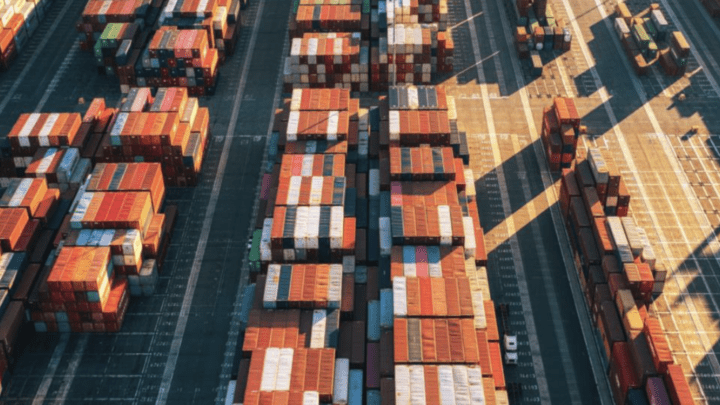
While the shortage of containers is persistent, the port throughput has also decreased. The findings are part of Container xChange’s monthly container logistics report titled ‘Where are all the containers?’
“Ports of Antwerp and Rotterdam handled a lower volume of containers in the first quarter of 2022 as compared to the same period last year. The containers meant for the ports in Europe are now piling up at the ports in China (due to the lockdowns), potentially causing a greater chaos in the coming weeks or even months. If the lockdowns persist, the throughput volumes will be further impacted in the coming months for these ports in Europe.” said Christian Roeloffs, co-founder and CEO, Container xChange.
Another phenomenon is the decline in container prices in Europe. The average price of 20ft DC and 40ft HC (cargo worthy) containers have declined at the ports of Antwerp, Rotterdam, and Hamburg.
As per the analysis, the average prices for 40ft high cube (cargo worthy) containers peaked in July 2021 (at around $4,400) and have been declining since then at these ports. A closer look at the data shows these prices further declined sharply soon after Russia’s invasion of Ukraine (From $3,350 on 23 February to $2,760 on 3 May 2022).
The shortage of containers on the major European ports is all set to impact the businesses in the region. And the industries impacted the most by these global disruptions are grappling with ways to reinvent supply chains for business continuity.
Overall impact of the macro events on the supply chain
The Russia-Ukraine war has had a dire consequence on Europe’s supply chain. But on a macro level, the two immediate impacts are — the rising energy prices and the resulting inflation from this war.
These two outcomes will further create an imbalance between demand and supply across industries and regions.
“A perspective on the current scenario indicates that the demand for goods can decrease, owing to inflation and higher costs of transportation. But at the same time, we can expect a growing pressure to source goods from cheaper countries. Essentially, this can drive up the demand for overseas goods, and in turn increase the demand for transportation services,” says Roeloffs.
Consequently, the changing demand-supply and sourcing patterns will worsen the container imbalance globally. The China lockdowns have brought more uncertainty in the supply chain.
“Lockdowns in China have slowed the global supply chain. Thus, the number of times a container moves from export destination to import destination has significantly impacted. This is not a good indicator for short-term forecasting of container availability and container prices.”
“The outlook for the supply chain and container logistics industry remains grim and uncertain amidst the disruptions. COVID lockdowns and the war in Ukraine will continue to impact the global economy significantly. Therefore, the revival of the supply chain remains farfetched.”
The road ahead: Diversifying supply chains to minimise risks
“Companies will want to diversify their supply chains in the coming times because they’ve seen the risks of linear supply chains where there is a concentration of supply chains in a few areas, regions or countries. And therefore, companies will want to diversify their sourcing strategy into a broader set of countries and geographies. Branching out the trade routes will help distribute the risks and at the same time source the same component from multiple regions. And that will split up the supply chain demands.”
“In the pre-pandemic times, the supply chain was all about efficient prices and just in time delivery model to make more profits. Now, companies are fundamentally reimagining their supply chains, the trade lanes, the partner locations, vetting of partners (especially now when there are first, second and third-order sanctions on many companies), and container routes. It is a given that risks are minimized by diversification. If we apply the same logic to supply chains, diversification could be a proven strategic direction that companies might adopt for business.”